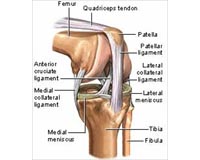 |
London, Canada (SPX) May 26, 2009 It appears that some superbugs have evolved to develop the ability to manipulate the immune system to everyone's advantage. A team of researchers at The University of Western Ontario, led by Joaquin (Quim) Madrenas of the Robarts Research Institute, has discovered some processes that reduce the lethal effects of toxins from superbugs, allowing humans and microbes to co-evolve. This discovery may lead to novel alternatives to antibiotics that specifically target the toxic effects of these superbugs. The findings are being published in the journal Nature Medicine and are available online. Madrenas holds a Canada Research Chair in Immunobiology and is a Professor of Microbiology and Immunology, and Medicine at the Schulich School of Medicine and Dentistry at Western. He also is head of Immunology at Robarts Research Institute and Director of the FOCIS Centre for Clinical Immunology and Immunotherapeutics. Staphylococcus (staph) aureus is the leading cause of infections in hospitals and the second most common cause of infections in the general population. By itself, it is linked to more than half a million hospital admissions a year in North America with estimated costs of more than $6 billion per year. Among the many weapons produced by this superbug, the most potent and lethal ones are known as superantigens. These lethal weapons cause massive and harmful activation of the immune system that leads to Toxic Shock Syndrome (TSS). TSS is a very serious disease that carries a high mortality, for which we do not have a specific treatment. Scientists have been puzzled as to why, when the body is directly exposed to the TSS toxins, a human can die within hours whereas individuals may carry toxin-producing staph and not get sick or die. What has the staph bug got that prevents the immune system of the host from being kicked into high gear? Madrenas and his collaborators at Western, Calgary and Chicago have identified the process that allows the bug to stay in the body without causing that massive activation of the immune system. The secret lies in molecules found in the cell wall of staph. These molecules bind to receptors known as TLR2 on immune cells of the host triggering the production of a protein called IL-10, an anti-inflammatory molecule that will prevent TSS. "It is clear that staph superbugs have developed strategies to control the toxicity of its lethal superantigen toxins, thereby preventing TSS. We believe that this is an important mechanism that warrants continued investigation. It also illustrates that evolution may operate not only by competition but also by networking ultimately leading to peaceful co-existence" says Madrenas. Based on these studies, Madrenas and colleagues have developed a computer model that will help predict the outcomes of encounters between staph and a host, and will reveal new aspects of these encounters. Share This Article With Planet Earth
Related Links University of Western Ontario Hospital and Medical News at InternDaily.com
 New Tissue Scaffold Regrows Cartilage And Bone
New Tissue Scaffold Regrows Cartilage And BoneCambridge MA (SPX) May 13, 2009 MIT engineers and colleagues have built a new tissue scaffold that can stimulate bone and cartilage growth when transplanted into the knees and other joints. The scaffold could offer a potential new treatment for sports injuries and other cartilage damage, such as arthritis, says Lorna Gibson, the Matoula S. Salapatas Professor of Materials Science and Engineering and co-leader of the rese ... read more |
|
| The content herein, unless otherwise known to be public domain, are Copyright 1995-2009 - SpaceDaily. AFP and UPI Wire Stories are copyright Agence France-Presse and United Press International. ESA Portal Reports are copyright European Space Agency. All NASA sourced material is public domain. Additional copyrights may apply in whole or part to other bona fide parties. Advertising does not imply endorsement,agreement or approval of any opinions, statements or information provided by SpaceDaily on any Web page published or hosted by SpaceDaily. Privacy Statement |